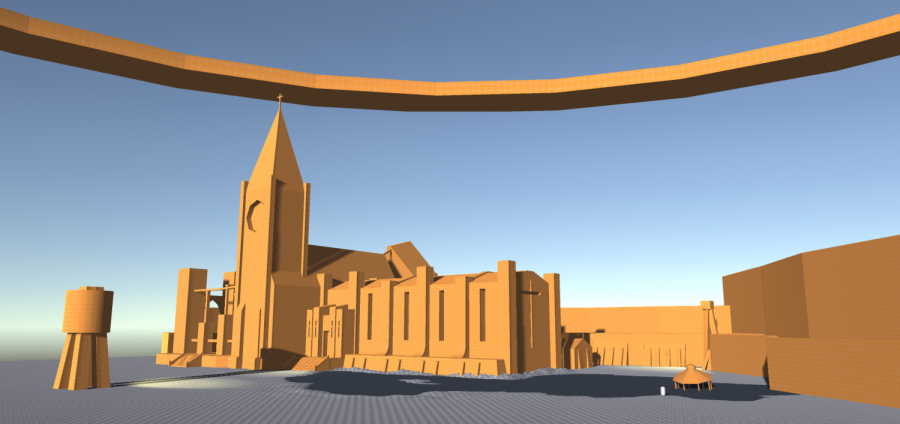
A funny dynamic arises in the relationship between the fact that a video game level presents players with the liberty to go about solving it all the while purposefully concealing the path to doing so. A plethora of tiny tweaks and minute mechanics aid in the fashioning of an experience that’s simultaneously liberating and oppressive. The destination is pre-set and players freely work their way to it. Foreknowledge and free will find themselves at constant odds.
The designing of a level under guidelines and deadlines generally follows the same path, as designers fulfill their tasks freely to achieve a preconceived idea. Tisch first-year and Game Design student Paris Stacy’s development of the “Cathedral Level” he’s been working on over the last few months took on a wholly different direction when he found out he had contracted the coronavirus. Stacy’s ambitious meticulousness was affected by full-body debilitation and he found himself absolutely inert, with ideas bouncing around in his mind that he could not actualize. Hindered by the virus, Stacy decided that this just could not be his new reality. He had to keep working, to obliterate any semblance of a predetermined narrative for what having the virus meant and transcend his impotence by demonstrating his value as a creator.
Stacy’s project is a standalone demo level for a greater project for an independent game studio. The level is intended to be part of a greater immersive stealth game.
The untitled project places the player before a ruinous cathedral surrounded by sentries of an oppressive state who elicit the fear of surveillance and lack of individual agency. The task is simple: infiltrating the cathedral to reach the bell tower within. Its story and themes are a product of its time, as the ongoing real-world pandemic continues to upturn most facets of everyday life. The feeling of disempowerment and subsequent overcoming of obstacles Stacy hopes his players experience stems from the same dispirit and need for perseverance he felt as he battled the coronavirus.
By the time Stacy returned to his home in Los Angeles for spring break, the pandemic situation in New York had dramatically worsened. Stacy, unsure if he had made it out unscathed, immediately began a period of self-quarantine and assumed he had the virus.
Stacy’s assumption proved correct. For a good portion of March and the beginning of April, Stacy was trapped within the confines of his room, subject to fluctuating temperatures and a brutal cough for a week. Already suffering from a sleeping disorder, battling the coronavirus represented yet another obstacle in his quest to clear his mind and work on the project he so desperately wanted to finish.
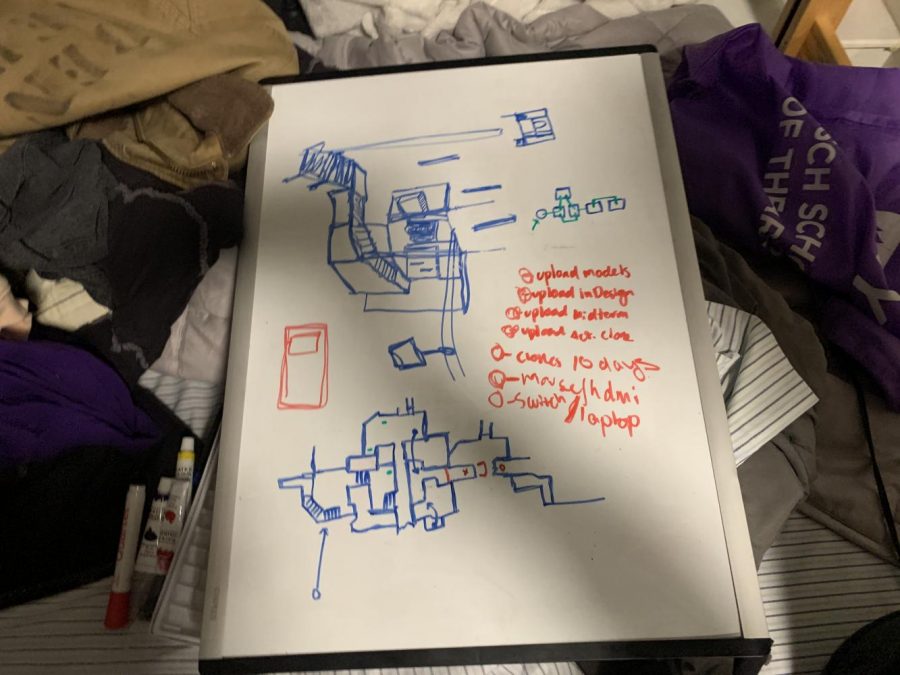
The miscellaneous manifestation of creation depicted atop a messy bed. Ideas are birthed on a whiteboard as Stacy projects his visions to disrupt empty blankness and fill it with creative output. (Photo by Nicolas Pedrero-Setzer)Stacy’s focus remained on completing his level. He arranged for his desktop to be shipped to him as soon as possible from New York by having a friend pack it up from his deserted dorm room and then asking his sister to send it in the mail. One week later, he was able to continue his work. As soon as Stacy’s shipment came in, he was ready to release all the imaginative flourishes he’d been bottling up until then. Every idea he’d sketched was itching to be reified, to escape the confines of his mind and become the building blocks of a new digital experience.
“Whenever you begin the work, you always sort of start at the largest scale you can possibly think of,” Stacy said.
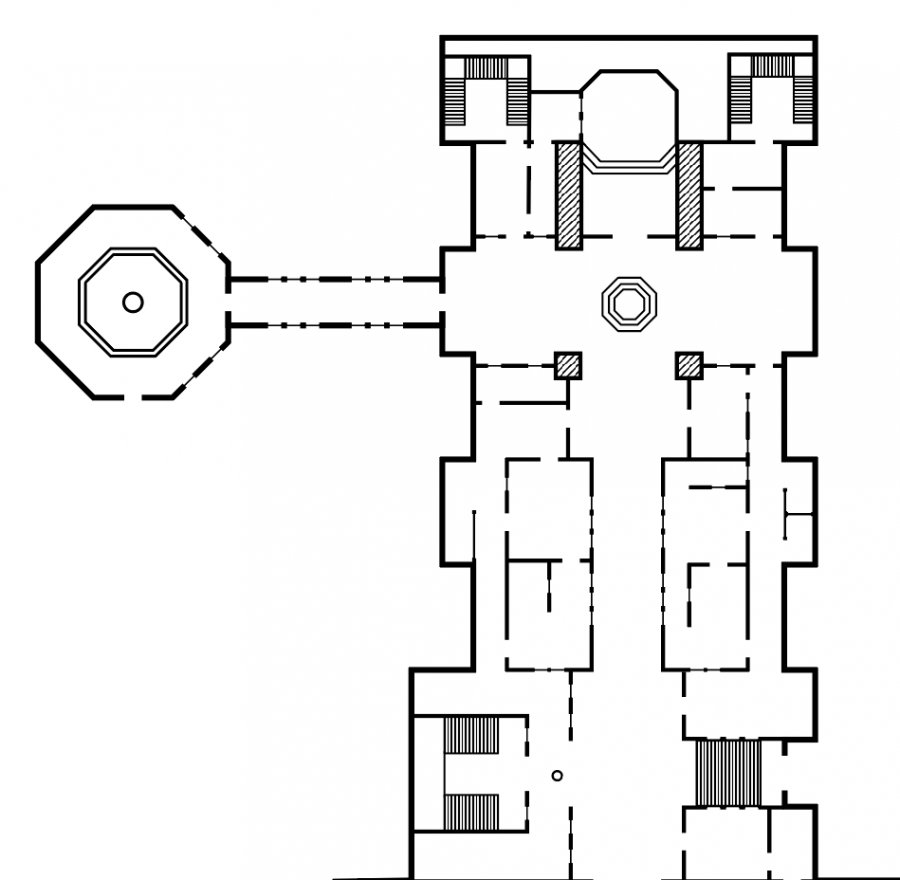
An over-the-top map of the inside of the Cathedral. (Photo courtesy of Paris Stacy)Visions of new creations kept him going, enabling him to fight off the extreme amounts of tiredness and coughing that afflicted him on a daily basis. In a mere two weeks, Stacy designed two elaborately distinct iterations of the same level, marking the third and fourth versions of his all-consuming project. The first of the two iterations was designed shortly after retrieving his computer. This third iteration placed the player in a ramshackle seaside town where they’d have to venture underground and stealthily navigate a maze replete with enemies to get to safety.
According to Stacy, the seaside town version was “well-received” by his collaborators. There was just one problem.
“The game mainly takes place in a dense, urban city and we wanted to show that off or give bits of that off,” Stacy said. “The game mainly explores themes of the horror of bureaucracy and the horror of control and stuff like that, and the seaside just wasn’t doing it any justice.”
Noting the product didn’t completely fulfill his optimal vision, he re-worked it and began working on a whole new vision, throwing away many of the concepts he’d built for the sake of achieving perfection. But by the start of the second week of his quarantine, he’d already whipped up a whole new iteration of the same level. Looking to transmit that sensation of going from powerlessness to control, Stacy began researching European churches that still stood in ruins to this day. The creator wanted a temple that presented an architectural dichotomy between meticulous construction and obliterated senselessness.
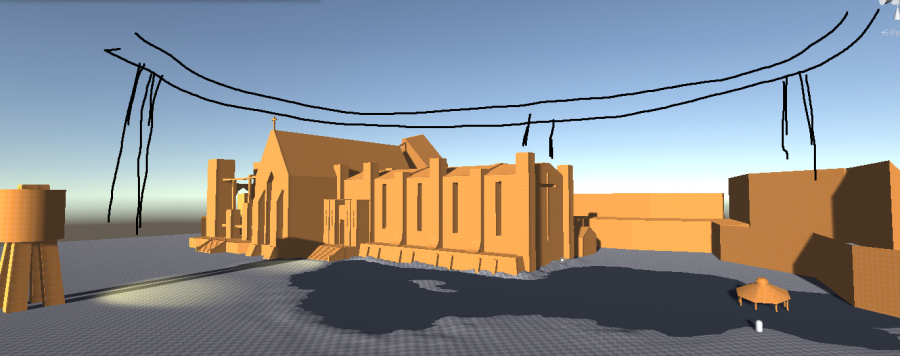
“We found this amazing reference called Coventry Cathedral, which is this cathedral that was bombed out in World War II,” Stacy said. “So half of it is in ruins, and the other half of it has been renovated in Brutalist fashion. It’s this very interesting mixing of worlds and I thought it fit very well with our theme where I thought you could see the gradient of degradation to renovation all encapsulated within one building.”
With his levels, Stacy offers players a scratch-off map and a coin, awarding them the tools to freely go about revealing the structures hiding beneath their surface. It’s a matter of player agency, a principle he exalts when it comes to making video games, and a thematic force that takes on new weight with the numerous mandates currently placed upon the population at large due to the pandemic. The stealth-based gameplay of the level is meant to give a similar feeling of autonomy and free choice to the player.
“If you look at a heist movie, it’s like 70% or 60% planning,” Stacy said. “And that’s important for heist movies and it’s the same way with stealth games. The feeling of examining a situation, taking it in and then formulating a plan is crucial to making stealth feel rewarding.”
Stacy mentioned the limits of his own understanding of what will and won’t work in the greater scheme of the project, which is where the rest of the team comes into play. The team — especially the game director — gives input that places the level in question within the context of a storyline and what’s feasible as a part of the entire product.
Talking about the struggles of compromising, Stacy noted that it’s been interesting engaging in constant dialogue with the rest of his team as a level designer because he always finds himself conflicted between fulfilling narrative goals or developing functional mechanics for gameplay’s sake.
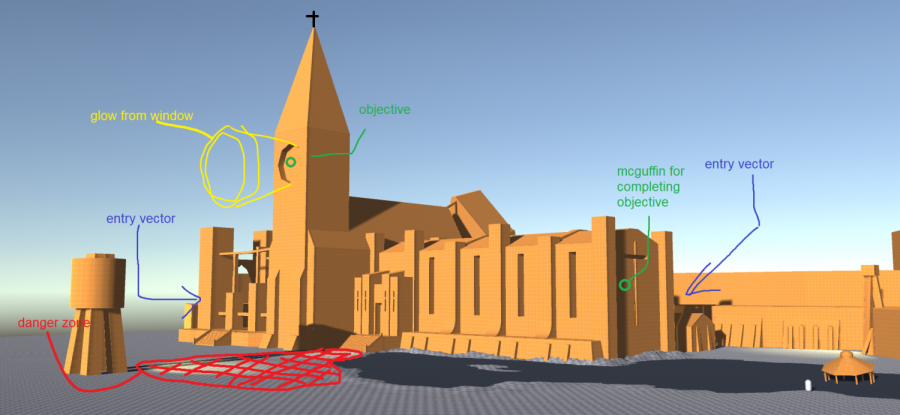
“Now, imagine you might have a completely open space, as a player,” Stacy said. “You can have this beautiful narrative moment, but then it begs the question: is the player going to get bored? And that question triggers more questions: what if he goes in a completely different direction that’s not the church? … What you might consider to be a minor change all of a sudden takes up this new context.”
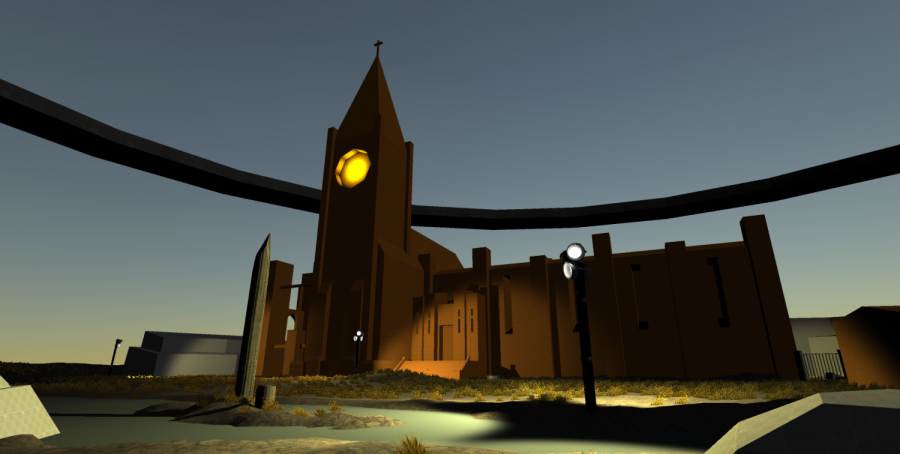
Stacy’s been a gamer his whole life. He lives off playing games, ranging from the relaxing life-simulator “Animal Crossing: New Horizons” to the gory first-person shooter “Doom Eternal” to the technologically innovative virtual reality game “Half-Life: Alyx.” Although he knows what it’s like to be on the other side of the screen, Stacy’s experience with game design had led him to consume games differently from how the average player might.
“When I’m really trying to sit down and enjoy an experience, I try to take my time and examine the environment,” Stacy said. “Whenever I play a game there are times when I find myself asking, ‘So what’s the designer’s goal with this area of the game? How are they leading me to that experience? How are they taking me through the world?’”
These are the questions that plague Stacy whenever he plays a game, but these are also the questions that pushed him to design this level with the player’s potential actions and reactions in mind. At first glance, the objective behind the cathedral level is simple: reach the light emanating from the bell tower at the center of the map.
But in reality, it involves scrupulous planning for the player, as they strategize their way into the church by avoiding sentries, spotlights and their own anxious thoughts. Above all, he’s been designing the level with the intent of making the player feel “disempowered” at first, but using the tools of agency afforded to them to overcome the challenge.
“The intended experience is that players are always feeling like they’re at their wits’ end,” Stacy said. “If they go through an encounter and survive, they only survive by a hair.”
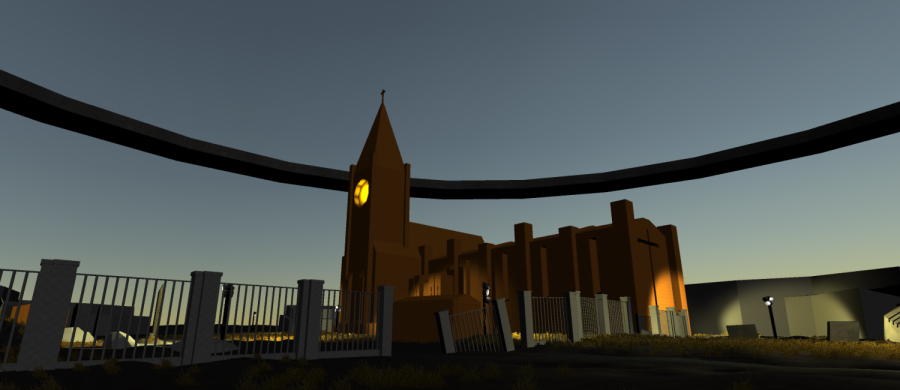
Being socially distanced and sick, the sentiment of being at your wits’ end is one Stacy has become all too acquainted with as of late. With nothing but his level design project to take his mind off the waves of terrible news that seem to be flooding the world, it took a while before Stacy could confidently say that he was “doing okay — mentally.”
“I certainly miss hanging out and seeing my mom — and hugging her, especially because I have [the coronavirus],” Stacy said. “I can’t go anywhere, see any friends, which sucks. But, weirdly enough, as I was saying earlier, it’s given me actually a lot of time to work on what I want to work on.”
In spite of being stripped of his agency by an unforeseen force, Stacy has found a vessel for exploring personal freedoms via digital architecture. The limitless liberty of his craft has given him a space to work out his emotions, liven his sketches and pursue his philosophies. The act of level-designing awards Stacy the ability to transform the dumb blankness of being into something truly full of meaning, full of heart and brimming with passion.
Sickness is personified as an oppressive regime, the loneliness of being holed up is turned into the sensation of being a character that must stay hidden in the shadows. In a time where any form of escapism has become a necessity, level designing has become Stacy’s way of proving he still has control despite the circumstances.
His project represents the perfect template to break free from the confines of his room and assist in the creation of a new world that shall hopefully host a myriad of souls looking to flee the distress of their daily life and realize they too can overcome their own perceived powerlessness.

Correction, April 24: This article has been edited to accurately reflect the state of Stacey’s health and any references to the developer of the project have been removed, upon request after publication. This article has been updated to reflect this and WSN regrets the error.
Email Nicolas Pedrero-Setzer at [email protected]. Read more from Washington Square News’ Spring 2020 Arts Issue.






















































































































































